This was published 2 years ago
Bougainville, Papua New Guinea: On Australia's doorstep, this place feels like a whole other world
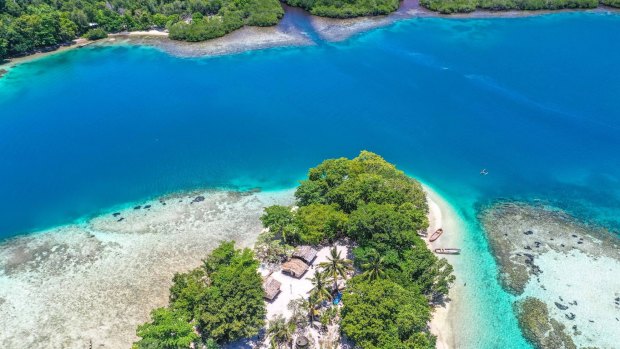
The route to Bougainville takes you over the brilliant blue of the Pacific, dotted with cayes and atolls.Credit: Liebert Kirakar - PNGTPA
There's only so long you can sit in the back of a Toyota Landcruiser on army-style bench seats bumping and grinding over the sort of terrain that makes earthquake simulators look serene and maintain a smile on your face.
It's been 10 hours or so in this car, making our way up from Siwai in the far south of Bougainville towards Buka in the far north. It should have been quicker but one of the rivers is up, the rushing water as high as the windowsills on another Landcruiser that is wallowing in the current like an iron hippopotamus, stranded.
There are no bridges down in the south of Bougainville; if the rivers rise you stay where you are. Or you turn around.
So the call is made to do the latter, to take a tortuous tiki tour of the island's south on dirt roads that are in no way deserving of that title, to finally find ourselves crashing along ever fainter bush tracks up into the jungle-strewn highlands.
You could slice the air here with a machete, it's that fat with moisture. People on the side of the track stop to stare as we rumble past, ever deeper. Finally, we come to a clearing, a small village of thatched huts and brushed earth, and our driver Paul mumbles: "We are here."
But where, exactly, is here? This is Bougainville, an autonomous area within a short banana-boat ride of the Solomon Islands that right now is part of Papua New Guinea, though not so long ago an incredible 98 per cent of residents voted yes in a referendum to secede. The wheels of independence are in motion.
If you've heard anything about Bougainville it was probably bad news. Locals here talk often of "the crisis", which was a full-scale civil war kicked off in the late 1980s by wrangling over the Panguna copper and gold mine, and by horrendous environmental and social mismanagement by Australian company Rio Tinto. Bougainville has been at peace since 1998 though tensions linger and memories are fresh.
I'm travelling with the Australian adventure travel company Crooked Compass as part of the first group of tourists to visit the island since the beginning of the pandemic, and, in truth, as one of the few who have been here since war broke out.
This is not a tourist destination in any traditional sense, despite the island being just over 2300 kilometres from Brisbane; that's roughly half the distance of Sydney to Perth. It is a true frontier. There are no companies that cater to tourists. There's no infrastructure, no development.
What there is, however, is the raw energy of a place that is ready to claim its independence and reopen to the world.
"Tourism is everything," a local politician thunders to an attentive crowd, when we attend a cultural show down in Siwai.
Right now, however, "here" is more precisely the village of Ibu, a dot on the map in the Wakunai region, in the dead centre of Bougainville Island's north. We get out of the Landcruisers and smile at the few women and children sitting outside those thatched huts, staring at us as we stare at them, and wait. And wait.
Messages are passed unseen in the jungle. Then finally there's a whooping from the thick foliage around us, a rustle of undergrowth, a commotion, a deep rumble, a series of high-pitched wails, and then branches part, leaves are pushed aside and the Rotokas people appear.
SO CLOSE AND YET SO FAR
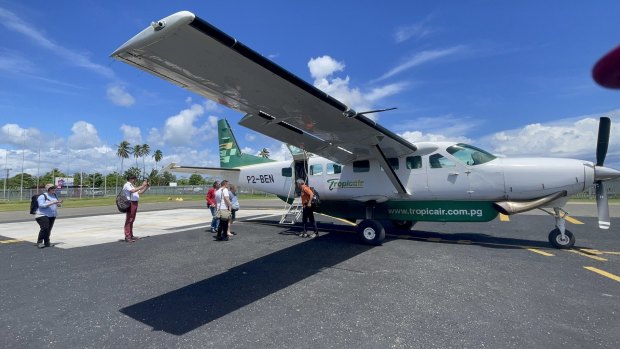
Credit: Crooked Compass
It's no easy feat, getting to Bougainville. You fly from Brisbane to PNG's capital, Port Moresby, spend the night there and then fly another 90 minutes north-east to get to Buka Island, separated from Bougainville Island by a narrow strait.
We were supposed to cross that strait by local banana boat and then meet our four-wheel drives on the other side.
However, while standing in the baking sun at Buka Airport, with its check-in counter housed in a rusting air force hanger and its waiting area in an outdoor car park, we discover that the local politician for South Bougainville, Timothy Masiu, has chartered us a light plane. It's worth knowing the right people here.
Our final destination today is Siwai, a tiny village deep in the island's south, where tomorrow we will be the first outsiders to witness the Siwai Cultural Show.
It's normally a six or seven-hour drive over those dirt tracks; instead we're soaring high above, over the brilliant blue of the Pacific, dotted with cayes and atolls, alongside the island's volcanic, forested interior, where trees are so densely packed with foliage they look like broccoli from above. Finally we touch down on a rough landing strip just outside the town of Buin.
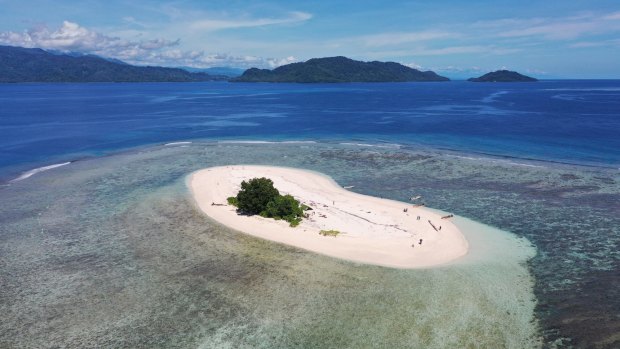
Credit: Liebert Kirakar - PNGTPA
There's quite the welcoming committee, sprinting school kids and helpless teachers and smiling local dignitaries. Turns out this is the first flight to land here.
Among those welcoming us is our group of local fixers for this trip. This is the team who will grease the wheels of local bureaucracy and keep us out of trouble and they include Lucas and Sarah Kawage, a couple who facilitate visits for foreigners, and Paul Mageu, our softly-spoken driver.
We pile into the back of two Landcruisers, luxury vehicles in these parts, and hit the road. "It's time to go now," Andrew says from the driver's seat, glancing at dark clouds gathering above us. "We have many rivers to cross."
Siwai appears around a bend in the dirt road an hour or so later. Our accommodation is the only guesthouse in town, Panakei Lodge, with thatched huts and spartan rooms connected by well-tended gardens. Visiting government officials stay here; it's been years since any tourists showed up.
There's no shortage of interesting characters around. A few minutes down the road, Noah Musingku lives in a barricaded complex that functions as his own attempted sovereign nation. Self-styled as "King David Peii II", Musingku's pyramid schemes have been banned in Bougainville and he continues to be a thorn in the side of those trying to unite the region for independence.
We put in a request for an audience with the king; Lucas, our fixer, meets Musingku's "protocol officer" to discuss the proposal. Eventually, we're denied. Still, plenty of others filter in and out of the Panakei Lodge grounds, striking up conversations, offering a hand to shake.
It takes a while to coax their stories out of them: turns out Peter, a bespectacled gent hanging out by the breakfast table, is in fact Peter Siunai, owner of the lodge, and one of the driving forces behind the new cultural festival.
It takes longer to discover that Paul, a local who pads in on bare feet ("bush shoes", Lucas calls them) and starts talking about his town, is chairman of the Siwai Tourism Association. He also runs a small botanical garden. He was also, we discover the next day, a high-ranking member of the Bougainville Resistance Army, a force whose presence is still felt in this region, though its history is mixed at best, with stories of kidnappings and terror.
"We all forgive each other," says Peter the lodge owner as we sit around later in sweltering heat and talk about Bougainville's history. "All of our enemies are with us. We work together, we are moving forward. We voted for independence together."
There is such a strong feeling here of hope and optimism. Bougainville is turning itself around. "You are safe here," people keep assuring us, in a sign that they're obviously very proud of that fact. Or, that it's not actually true.
IT'S ALL IN THE ISLAND TIMING
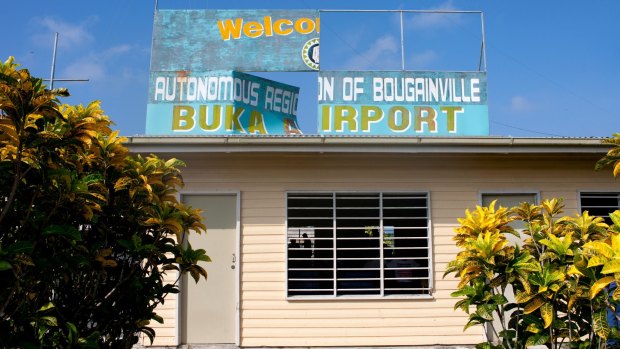
Credit: Alamy
You learn quite quickly that there are three time zones on this island: Bougainville time (current), Port Moresby time (an hour behind), and "PNG time", which is the elastic notion that things will happen when they happen. So just relax.
Everyone we come into contact with here is operating on at least two of those time zones. Our challenge is to figure out which ones.
So when Paul the local tourism chairman tells us the cultural show will begin at 8am today, we have to first figure out if he's talking Bougainville time or Moresby time (which plenty of people here, confusingly, seem to use), and then decide for ourselves if this thing will actually begin when people are saying it will. And it doesn't.
We awake to the sound of roosters crowing and drums beating and we gather dutifully at the local showgrounds by 8am to wait for the local member, Timothy, to show up so proceedings can begin. That doesn't happen until after midday.
By then, however, the groups are assembled and the show can start.
There's incredible cultural diversity in Bougainville, as there is in all of PNG. There are 23 separate ethnic groups within this small island region, all of whom speak their own distinct language, carry their own customs, and have their own traditions. Travel a few minutes from one small village to another and everything changes.
The idea of the Siwai Cultural Show is to allow those groups local to the area to display their cultures and so today there are 14 groups dressed in their traditional finery.
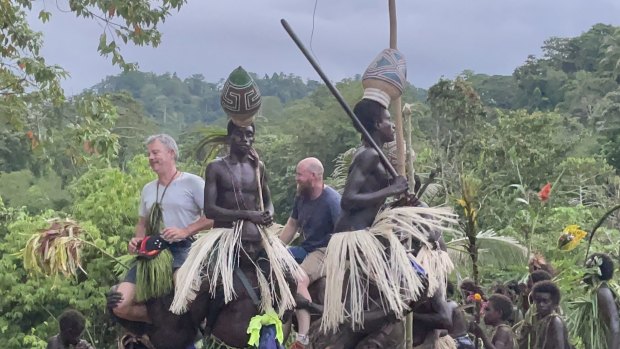
Credit: Crooked Compass
Some wear conical hats decorated with chicken feathers; others' bodies are covered in zigzagged paint of white and red; some wear grass skirts, others are clad in woven dresses; most have their faces painted with stark splashes of colour.
We discover that here, the watcher frequently becomes the watched. As much as this show is an attraction for us the visitors, we are also an attraction for locals who haven't seen the likes of us in a long time.
The sing-sing begins, as each cultural group dances and sings to traditional music: the deep huff of panpipes, the tropical salsa of long bamboo pipes hit with pieces of rubber.
Today is a mere taster, a Friday dress rehearsal for Saturday's main event. There's excitement in the air as stalls are set up to sell betel nut and its accoutrements (the splodges of neon-red, betel-soaked saliva make the parade ground here look like a Jackson Pollock painting), fresh coconuts, woven baskets and more. Something big is stirring.
The next day we're determined to spend the morning seeing one of the area's major attractions. It's the historic World War II wreckage of a Mitsubishi G4M bomber aircraft.
On April 18, 1943, Japan's most prominent naval officer and Pearl Harbour attack mastermind, Marshal Admiral Isoroku Yamamoto, climbed aboard the aircraft in Rabaul, in Papua New Guinea, for a flight bound for Balalae Airfield.
He never made it. His plane was shot down over Bougainville with the wreckage still in the jungle. Intrepid travellers, such as us, can hike six kilometres from the nearest village to see it.
But this is Bougainville, so you don't just arrive somewhere and have a look. First we have to visit the village of the local landowners, and sit back while Lucas and Sarah engage in some hardcore wrangling, and for that matter palm-greasing, to secure our access to the wreckage.
Eventually that's completed, and we make our way, with most of the village, an hour into the jungle to see the remains of the aircraft wreckage buried deep in the foliage.
HIGH IN THE HILLS
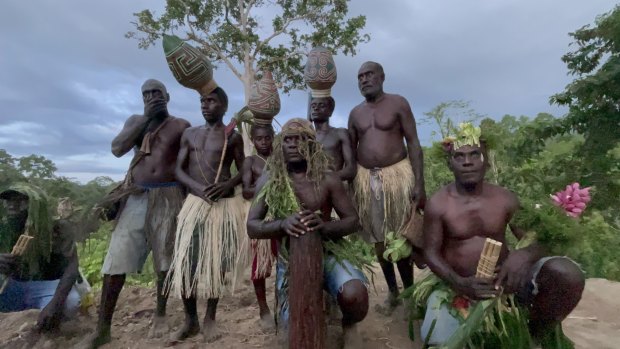
Credit: Crooked Compass
We miss the rest of the festival. Decisions are made, times blow out, and we rumble back into Siwai in the evening to find shelters being torn down and thousands of festival-goers streaming onto the road to walk home. Such is life here.
The next day the river is up and we have to circle around the bottom of Bougainville with the sun dipping below the horizon by the time we make it to Ibu, to a meeting that was supposed to take place at 10am.
Still, the village is ready for us. The undergrowth rustles and the Rotokas people emerge from it. Barely anyone gets to witness this sight. This is a deeply traditional group that still relies on the land for survival, where young boys are sent with a group of elders into the jungle for several years to learn about hunting, medicine and local law.
While they do that, they wear the traditional "upe", a tall, bulbous headdress so famous in Bougainville it appears on the region's flag.
As the Rotokas men emerge from the jungle in the fading light, we spot three of those lightbulb-shaped headdresses bobbing among the group, three boys who will become men, surrounded by a whooping, chanting crowd.
We follow as they stream down the hill and into a clearing. They begin to shuffle in circles around a tall pole, then, as the chants and stomps become steadily more hypnotic, the boys in their headdresses close their eyes and seem to go into a trance.
This ceremony is for us, it's a demonstration of culture, to show what happens when those boys become men. Dust rises from stomping feet, twilight sets in, the chants rumble deep in your soul, the boys look perfectly calm, their eyes closed, their feet treading soft patterns in the dirt.
An hour ago I'd been desperate to just get back in the Landcruiser and continue on to Buka, still three or four tortuous hours away. But here in a clearing deep in the jungle, the sunlight rapidly fading, you understand that Bougainville's magic works on its own time.
THE DETAILS
TOUR
Crooked Compass's eight-day Bougainville & Siwai Cultural Show tour departs on August 10 this year. The tour includes accommodation, transfers, services of a guide and escort, and most meals, entry fees and permits. Prices from $6395 a person. See crooked-compass.com
FLY
Qantas flies from all Australian ports to Port Moresby, via Brisbane while Air Niugini offers connections to Buka. See qantas.com; airniugini.com.pg
HEALTH + SECURITY
Papua New Guinea, including Bougainville, at the time of writing, receives yellow, "exercise a high degree of caution", on the Australian government's Smart Traveller website. Specific advice for Bougainville is to avoid political gatherings, and check with local sources about the security situation before travelling. The government also advises that medical services in Bougainville are basic and to be certain your insurance covers medical evacuations. See smartraveller.gov.au
MORE
Ben Groundwater travelled as a guest of Crooked Compass
FIVE MORE THINGS TO SEE AND DO
DISCOVER THE BUKA ISLANDS
Buka Town provides access to a swathe of tropical islands, some inhabited, some peacefully deserted. You can tour these islands in a local banana boat, calling into villages, cruising past civil war-era shipwrecks, snorkelling on pristine reefs, and then having a barbecue on a white-sand beach in absolute paradise.
VISIT THE PANGUNA MINE
This isn't a tourist attraction as you know it – but then again this is Bougainville, where nothing is a tourist attraction as you know it. Panguna copper and gold mine was once the largest open-cut mine in the world, and though it's now decommissioned, it's still an incredible sight, and one with a whole lot of history.
CONQUER KILU CAVE
This incredible site won't be easy to get to. You'll need to hire a local guide in Buka Town, and even that is no simple feat. Find the right person, however, and you can see Kilu Cave, which contains evidence of human occupation dating back 30,000 years, the earliest known site for humans in the Solomon Islands archipelago.
VIEW WORLD WAR II RELICS
Aside from the famed wreckage of Yamamoto's plane (see main story), there are plenty of other war-time relics to see in Bougainville. Many can be found around Kangu Beach, just south of Buin at the southern tip of the island, where there are old bunkers, and even weapons still in place, pointing out towards the Solomon Islands.
EXPLORE ARAWA
Arawa was once Bougainville's capital, a bustling commercial hub that was made rich by the nearby Panguna mine. Much of the town was destroyed during the civil war but there's still an airport here as well as some decent places to stay, making it well worth the trip.
Sign up for the Traveller Deals newsletter
Get exclusive travel deals delivered straight to your inbox. Sign up now.